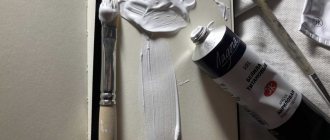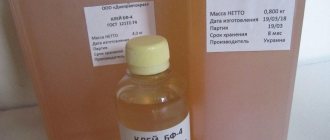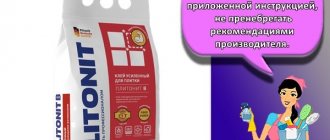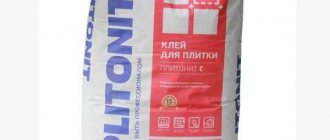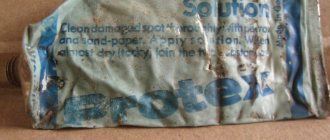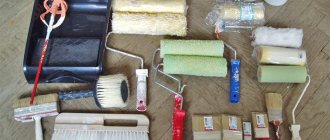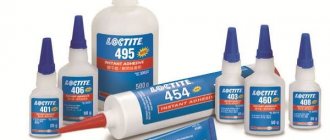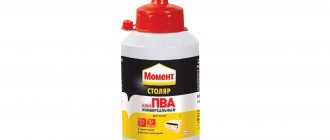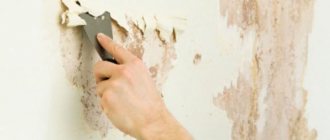White paints are preferable in the choice of materials for painting, decoration, and certain types of construction work. Sometimes we don’t even think about the fact that we use such an item in everyday life. The main area of use of zinc and titanium white is artistic activity. Thanks to them, the master can create a colorful layer on a canvas or decorative covering.
Interestingly, in construction, zinc white is used as pigmenting paints for some water-soluble emulsions.
Excursion into history
A few decades earlier, when people did not yet know what white paint based on zinc powder was, lead paints were used instead, which were known during the reign of the Roman Empire and were also in demand among the Greeks. Such whitewash was used everywhere until the beginning of the 19th century. Lead paints were toxic, which prompted humanity to take action: to search for an alternative. This is how zinc white came into being.
At the beginning of 1780, when paints appeared, they were not widely used due to their high cost; relatively cheap zinc-based whites were obtained only half a century later. At the beginning of the 19th century, new, more modern titanium paints appeared on the market. They were first learned about in Norway. Now people chose titanium and zinc whites. What is the difference between these colors and lead colors? Titanium paints differ from other bleaching paints in their properties: they are non-poisonous and adhere well to the canvas.
White paints and the history of their creation
Whitewash is any type of white paint; they can be made from different components. Initially, they came up with the idea of producing white color from lead; lead white formula included poisonous elements; they were used in Ancient Greece and Rome, but they did not stop the search for a safer option.
Their use lasted until the 19th century. Only in 1780 were they able to invent zinc white, but the products did not immediately become popular, at that time the cost of their production was high. Only in the 1840s. were able to create a cheaper type of zinc paint.
And in 1912, a new type of white titanium paint appeared. Their developer lived in Norway. The creation of acceptable, safe whites from zinc and titanium has pushed aside the lead type of gouache.
What is titanium white - this is a composition that is completely harmless and also has the best hiding power.
The creation of acceptable, safe whites from zinc and titanium has pushed aside the lead type of gouache.
Main characteristics of bleaching paints
Ready-made white or thickly rubbed colors are available for sale. The latter are intended for use after dilution with a special oil varnish, which acts as an artistic solvent.
Apart from oil varnish, no other solvents are suitable. The use of undeclared materials may result in an undesirable yellowish tint that will be imparted to the paint during the painting process.
In its pure form, white has a snow-white color, sometimes with a bluish tint. Moreover, the tone and quality of the source material depends on the raw materials used to produce the pigment. Store paints in a closed tube or other container, as they absorb moisture from the environment. Zinc white has distinctive features: it does not ignite and does not deteriorate under the influence of microorganisms.
Transportation and storage
The product can be transported by all types of covered transport, with the exception of whitewash packaged in special soft containers - they can be transported in open vehicles and also stored in open areas.
As for zinc white, packaged in other packaging, they must be stored only in closed warehouses, with temperatures ranging from –40 ºС to +40 ºС. They are placed on wooden pallets in stacks up to 3 m high.
Shelf life – 1 year.
Advantages of zinc white
Such a coloring material as zinc white has a number of advantages:
- resistance to direct sunlight;
- high compatibility with most colors from the palette;
- application in all areas of painting and decorative arts;
- non-toxic.
Zinc white also has some negative qualities:
- take a long time to dry;
- the paint layer applied through the use of whitewash is prone to cracking;
- low hiding power;
- high consumption of oily solvents.
Advantages and disadvantages
Advantages and disadvantages
light resistance;
low degree of toxicity;
compatibility with other dyes;
no changes when interacting with sulfur compounds;
wear-resistant coating;
Possibility of use in different types of painting.
long drying period;
risk of cracking;
low degree of hiding power.
What are the differences between lead and zinc white?
In recent years, craftsmen have been actively using titanium and zinc white. What is the difference between these modernized pigments and lead white? Previously used lead paints had a pure texture without inclusions and a snow-white color that did not lose brightness when exposed to the sun.
Despite the toxicity, lead paints had a number of advantages:
- plasticity, allowing the color to maintain strength and not crumble;
- moisture resistance;
- quick drying property.
Some of the disadvantages of white lead are:
- toxic properties;
- not suitable for mixing with all types of paints;
- Over time, the bright layer lost its attractiveness.
After weighing all the pros and cons, humanity came to the conclusion that the use of lead white in industry is extremely harmful to health and life, so they were replaced by a more modern and less harmful option - zinc, and over time, titanium white.
Usage
Since lead compounds are poisonous, they are not used for household purposes.
To paint coatings to protect them from exposure to water, zinc white compounds are used, which are based on oils, as well as titanium and alkyd whites.
To paint ceilings and walls treated with plaster, water-soluble dyes consisting of zinc white are used.
Note that currently zinc white is used quite rarely for walls; it is mainly used for application to ceilings.
Unique properties of titanium pigments
The benefits of using titanium white are:
- creating a matte and durable surface after application;
- ability to withstand sudden changes in indoor humidity;
- neutral reaction to direct sunlight;
- creating a bright texture layer.
Titanium white has one drawback - the structure of the paint becomes brittle after drying, so such a canvas or design cannot be rolled up, and during transportation be extremely careful not to damage the object.
Zinc Powder Production Process
The technological process takes place in a furnace with the supply of nitrogen gas to the working zone of zinc evaporation at an ambient temperature of 500-600C for 5-10 minutes. This leads to an increase in temperature in the furnace to 1200-1450C and a change in pressure (50-100 Pa).
Such parameters of the working environment are maintained by periodically pumping the furnace with nitrogen (every 3-4 hours for 5-10 minutes). In the center of the furnace there is a crucible for feeding zinc raw materials. The design features of the furnace also include the presence of specially built-in windows in its masonry to supply the resulting melt into the zone of intense zinc evaporation.
Zinc is supplied from the working area of the furnace to the cooling area by means of a special hog fixed above a container with boiling zinc at a height of 400-500 mm. The material is moved into the cyclone and baghouse by the draft generated by the exhaust fan. After zinc vapor is discharged into the cooling zone, it settles on the walls of the condenser. The resulting particles end up in the lower part of the condenser, from where they are removed using a screw.
When using this technology, pure, finely dispersed zinc powder is obtained. In this case, operations of a higher hazard class are carried out without the use of manual labor.
There is also the Waelz technology for the production of zinc oxide. Its product is Waelz zinc oxide, which is widely used in non-ferrous metallurgy.
How and where to use whitewash
Due to the high toxicity of such a material as lead, paints based on it have fallen out of use.
Whitewash is actively used in construction. Thus, zinc white is used to cover surfaces, the technical characteristics of which help to insulate walls and ceilings from the negative effects of moisture. Alkyd and titanium compounds are also suitable for these purposes.
Scope of application of thickly ground zinc white: coating of wooden, metal, plastered surfaces of the room. Such water-soluble paints are suitable for finishing plastered surfaces (walls and ceilings). Today, walls are rarely simply painted white, unless it’s a design idea. White color is predominant when finishing the ceiling. This is where zinc-based whites can be used.
Characteristics of titanium gouache
The scope of use of this type of white is varied: the creation of graphic, decorative and artistic products. The product is evenly applied to cardboard and paper substrates, as well as to canvas. Due to its safe health properties, paint is chosen for children’s painting.
But their use is not possible for all substrates; sunlight causes the color to lighten, an effect called chalking. If you mix the composition with organic dyes, the white will be shaded blue.
You should not add ultramarine, azure, cobalt, cadmium to gouache; these elements, in combination with titanium, create a soapy coating.
Features of titanium-based paints:
- An even base is created even on a textured surface with pores; considered a universal medium for painting;
- Long service life, the brightness of the shades will be maintained for a long time;
- Withstands external factors, the layer will be matte;
- It produces warm tones and mixes well with other paints.
Due to its safe health properties, paint is chosen for children’s painting.
Rules for working with zinc white
Painting work is the main area of application of paints. the procedure is carried out in several stages:
- When starting painting work, do not forget to equip yourself with personal protective equipment: gloves, goggles, mask, cap. This will help protect your face, eyes and hair from paint dripping from the ceiling.
- Provide free access of air to the room. After painting, ventilate the room well.
- Clean the ceiling from the old layer of plaster, paint, dust and dirt deposits, and streaks.
- Apply a new layer of plaster and level the ceiling (if necessary).
Paint only if the ceiling surface is perfectly flat.
5. Sand the putty surface with sandpaper. Sand until the surface reaches the desired smoothness.
The surface, which has increased absorption characteristics, is covered with several layers of drying oil before applying paint.
Painting metal objects with whitewash
There are two industrial methods for coating any metal product with zinc white.
In the first option, the entire metal object is lowered into a vessel with a titanium or zinc paint composition (lead paints are not used in industry).
The second method of industrial painting involves coating the entire surface of an object with titanium, zinc or alkyd white with a spray gun.
To do this, the dye is diluted with the required volume of solvent and then filtered.
Only after completing these activities should you begin to paint the product.
At home, painting is done with a brush or roller (but cars are prohibited from being painted this way). Lead paints are not yet used in everyday life.
How to work with whitewash correctly: advice from professionals
- Apply thickly ground zinc whitewash in even layers, allowing it to dry.
- Paints must be applied to a previously primed surface.
- There is a need to stir zinc white before use. The paint is diluted with natural drying oil or oil when thickening. For oil paints, white alcohol thinner, turpentine or a special solvent for oil paints are suitable. Everything you need today can be easily purchased in specialized stores that sell goods for artists.
- High-quality painting is ensured by applying several layers of paint to the surface.
- A new layer of white must be applied only after the previous one has completely dried, otherwise the film layer will be damaged and the surface will no longer be so durable.
- When using lead white in artistic activities, take precautions and ventilate the room.
The use of white paints in everyday life is a frequently observed phenomenon. This is due to the fact that they are taken as a base, mixed with other colors to obtain the desired color. When working with such material, it is important to remember that ready-to-use zinc white is combined only with single-base materials.
Craftsmen note that zinc and titanium whites are very popular due to their technical characteristics and the cost of the paints. Such material is inexpensive, and using it you can create a real artistic masterpiece, because the art of painting is the main area where bleach paints are used.
Painting method
Zinc whitewash is used to coat plastered, metal and wooden surfaces.
Work is carried out wearing rubber gloves, and during the work and after completion, the room must be ventilated.
Before you start painting, white, if it is a thickly ground powder, should be diluted with natural drying oil, the percentage of which should be 18–25% of the total mass of white, and mixed very thoroughly. If it is an oil paint, then, if necessary, white spirit or turpentine is added to it.
The surface should be pre-prepared:
- first it is cleaned of dirt, grease, dust and old paint (if required). This is done using a spatula;
- then the cracks and cracks are covered with putty;
- after it dries, the working surface is sanded using sandpaper;
- then apply a primer;
- After the primer has dried, proceed to painting.
To reduce the consumption of white, it is recommended to cover the surface with drying oil.
Apply whitewash to a dry, smooth surface using a paint brush, paint sprayer or roller:
- the brush is used for painting small elements and small surfaces;
- for a large coverage area, use a brush or roller;
- The painting process is more efficient using a spray gun. This method makes it possible to create an even layer and treat hard-to-reach areas.
The number of layers can be 1 or 2, depending on the desired result. Each layer usually takes 24 hours to dry if the room temperature is not lower than + 20º C. The consumption of white for one layer is approximately 170–200 g per 1 sq. m. m.
